Start: Lisbon, 5th October 2013, at 15:08 UTC.
End: on 19th April 2014 about 20:18 UTC I stepped on the land in New Smyrna Beach in Florida.
I spent 167 days on the ocean and traveled the route of 6 710 nautical miles/ 12 427 km.
However, my Second Transatlantic Expedition was not without technical problems and unfavorable winds.
I had to divide my journey into two parts. During the first stage I spent in the ocean 141 days 19 hours and 55 minutes and traveled a route of 4500 nautical miles. The unfavorable winds in the Western Atlantic stopped my kayak for more than 40 days and forced me to mooring at Bermuda.
Read more...
I began the second stage on 25th March, 2014 at 16:35 UTC with launching the kayak from the sailing ship “Spirit of Bermuda” at the position 27 24’ N, 064 02’. The kayak was nearby this location on the 10th January 2014, when I did the first part of the expedition to Bermuda.
Launching the kayak from the deck of the sailing ship was unfortunate. The kayak was damaged during the lifting operation. The rod which protected the kayak from overturning was broken and the navigational light was broken too. Despite these loses I decided to kayak in the damaged kayak to Florida. The sailing ship returned to Bermuda.
On 17th April after spending the next 23 days in the Atlantic and kayaking the next thousand nautical miles I reached Port Canaveral in Florida. From there, using internal routes, I reached New Smyrna Beach where on the 19th of April at 20:18 I officially ended the voyage. My Second Transatlantic Expedition was the biggest kayaking expedition in the history.
More in the notes from the trip below – from the beginning of the journey to its end: 04.10.2013Olek Doba and the kayak OLO in Lisbon, ready to start. The start from marina Doca do Bom Succeso in Belem, Lisbon, will take place on Saturday, 5th October 2013, at 16:00 local time, that is 17:00 Polish time and 15:00 UTC. 5.10.2013Three and a half hours after the start, at 19:40 Polish time, Olek called and said that he just passed the lighthouse Farol do Torre do Bugio and that he set sail to the open waters of the Atlantic. The mild wind is blowing from the North. On board everything is in the best order. Olek is rested. He plans to paddle and observe the passing ships all night long. 9.10.2013The wind weakened, waves are smaller. Dozens of dolphins were playing around the kayak. Everything is in order, except from the most important thing: after many hours of rehearsing he still cannot force the desalinator to produce fresh water. 11.10.2013Today’s text-message from Olek received at 15:16 “The Desalinator is OK! It works! The false air caused the problem. I took the desalinator outside twice. After the final montage I managed to guzzle half a glass of water! Olo” Another text-message received at 19:49“There is hope for a complete success. I will take the desalinator out for the third time in order to do extended testing. Today several times visits of the dolphins. Moreover nine ships and a drilling platform at a distance of 4 km. Olek”
13.10.2013
Olek wrote:
Calm. A turtle swam 15 meters away from me.
I took the desalinator for testing for the third time out. I replaced the valve with an emergency connector… made of a pen. The work on the desalinator was successful: 4 liters of water per hour.
30.10.2013
The toughest Polish kayaker Olek Doba spent the October storm in the Atlantic Ocean, rowing from Lisbon in the direction of Florida.
In a few days Olek will kayak in a close proximity to the Northwest coast of the Isla de la Palma, which is the most western Island of the Canary Islands. However, he will not stop there.
There is an extraordinary opportunity to meet with Olek! If you have a yacht and are right now in the Canary Islands, you can sail to meet with Olek, wave to him and take pictures before he finally passes by the last piece of land on this side of the Atlantic.
17.11.2013
The kayak floated more than 1,500 miles.
Today’s message from Olek:
In the morning dozens of dolphins frolicked alongside the kayak. I was taking pictures over and under water. A ship, which was in a long distance, overtook me. A moth sat on the kayak – brave.
21.11.2013
Olek wrote:
The conjunctivitis luckily passes. After applying a series of eye-drops the inflammation subsides.
I was not sure if after the removal of the loading crate the kayak will be less sensitive to setting sideways to the waves. Unfortunately the work did not help. In order to regain self-steering I am experimenting with a dart fixed to the rudder blade. The dart projects upwards and downwards over the rudder blade, it is its extension to the top.
When the wind pushes the upper part of the dart it forces turning of the rudder, so that the stern turns upwind. After passing the wind’s lodge the rudder moves in the opposite direction because the wind pushes on the other side of the dart. That’s the idea.
It was a lot of work. I secured myself from falling overboard, so that sitting at the stern of the kayak I could work with both hands at the same time. I installed the whole thing with two screws and three ties.
Just behind Lisbon water entered through a damaged shield the SPOT2 locator and the machine corroded. Now this is scrap. I have a lot of AAA batteries which mach only SPOT2. All the time I am using an older SPOT model, which needs AA batteries. And I have only a little of these, while I anticipated that I will only need them to power the GPS.
I sparingly power SPOT with other batteries. 1/3 of the route is behind me. The SPOT batteries will last only for the next 1/3 of the route. What about the remaining 1/3? When should I use the adequate lithium AA batteries? Now or near the Caribbean and Florida? The nearest shop with batteries is in Florida! But what use of them do I have there? The problem is right now. On the empty spaces of the ocean I can rarely turn SPOT on – for example 3 times a day for one hour. Since Thursday morning I am testing SPOT’s replacement power. I connected a set of four parallel-connected AAA batteries via a series connection with a second set of four parallel-connected AAA batteries. The whole thing gave 3.6V, nominally 3V. With such a set consisting of eight batteries I charged the SPOT. The truth is that the red light flashes sometimes instead of the green one, which means the batteries level is 30% or less. The signals are sent every 10 minutes.
27.11.2013
Yesterday the temperature was 30 degrees and it was windless. I kayaked to the hydrological boy B11. Its diameter is 30cm and it protrudes 1 meter above the water.
I took underwater pictures of the kayak – mostly of the gooseneck barnacle. On the gray antifouling paint there is only a little of them. Above the grey paint, along the non-sunlit starboard, the gooseneck barnacles grew densely along a 5cm wide yellow painted strap. They had also grown on the rudder. Their length is of 50mm. After taking photos I removed them.
I am getting various comments. For the jealous ones I am posting the description of my symptoms:
- On the whole body, mostly in the region of the groins and buttocks, where the worst ventilation takes place, appeared red sports with a diameter of 6 mm. These areas are very sensitive and itchy. After one week they have a diameter of 10mm and they are convex. After two weeks in the middle of the spots appear whitish bulges. They are 3 mm in diameter and are filled with liquid. After three weeks the symptoms begin to recede. The whole process continues for about one month. Sometimes 75% of the surface of the femoral groin is covered with lesions. The affected areas are itching all the time.
- White lesions with a diameter of 3-5 mm are forming in the deep skin (especially of the hands). They are painful by touching. They cause discomfort when I touch the paddle. The paddle irritates the skin and it hurts. At once I have dozens of such changes. They last for about a month.
- The conjunctivitis disappeared after a week.
- Under the foot and finger nails grow white masses (mycosis?). It separates the nail’s plate from the fingertip. It grows deeper and deeper. It does not hurt, however I feel that I am losing my nails.
- The skin of the hands is damaged by rubbing salt .
Medical recommendations: stay away from salt water. Bathe frequently in fresh water. Keep your skin dry. Ha, ha, ha.
The same problems afflicted me during my previous expedition. Is there anything to envy?
07.12.2013
Olek wrote:
Tragedy in the kayak. At night, a flying fish killed itself under the hatch. I made a filet and ate it fresh. Delicious! The night was calm, wind SW 5, 1013 linear meters. During the day the wind was SW to WNW 5-10. A series of storms and rains came by. The physical condition and…
17.12.2013
At night I kayaked over the Meridian 45 W, which is in the middle of my route.
I am sending greetings from the middle of the Atlantic to all the supporters of the expedition. I am thankful for keeping fingers crossed, sending good energy and all other forms of support.
Today at 17:00 Polish time I am organizing a “POLOWINKI” party. The program includes: launching a sealed bottle from Calbudu with an expedition poster and sending it to the finder – Bottled mail. During the party I will open the last half-liter bottle of home-made wine. Of course if I manage to take the bottle out of the canoe cellar, that is the baggage compartment. I have relatively big, 3-4m waves, which are only waiting for the opening of the hatch in order to rinse inside. I cannot complain about the waves, because this product is very favorable for me and the winds.
Strangely quickly I emptied a three-liter bottle of wine. Altogether I took only 3.5 liters of wine. The party is open to all – without any tickets and fees. The dress code is optional, though modest. The temperature is 27 degrees, few cumulus clouds. Some fish will drop by. You are invited.
17th December 2013, 9:50:54 UTC
Position 23 47’38″N, 45 08’05″W
23.12.2013
It is not possible to establish a telephone communication with Olek. According to the information obtained from the Maritime Rescue Coordination Center in Gdynia, a ship sent by the US Maritime Rescue Center floats to meet with the kayak. The ship crew is supposed to explain why Olek turned on Monday morning the HELP alarm on and possibly to provide assistance. The meeting should take place at night, from Monday to Tuesday.
As indicated by the SPOT locator, the kayak is moving West at a speed of about 3 knots. The strong east wind, which produced a very large wave, maintains. The distance to the nearest land, to Antilles, is 600 miles.
24.12.2013
Captain Wieslaw Jasinski from SMC MRCK in Gdynia sent further details. The M/V NISSOS DELOS ship met with Olek at the position 23-40.55 N, 053-14.21 W. The ship crew unfortunately said that “His SAT phone is broken.”
29.12.2013
Olek has 1300 nautical miles more to the shores of Florida. The weather forecast predicts, that after the few days of mild winds which took place, the favorable, stable, moderate strong trade winds will return.
The Inmarsat satellite phone is broken and unused since the beginning of the expedition. The spare Iridium phone is not answering. That is why there were no new messages from Olek. There are problems with SPOT satellite locator’s power supply, but Olek manages to turn the SPOT sometimes on.The most recent position: 27th December 2013, at 10:53 UTC:24-51’20”N, 055-41’28”W. 12.01.2014750 nautical miles in a straight line separates Olek from the shores of Florida. The winds pushed the kayak slightly further North than is was planned. The closer to the continent, the less stable is the weather. In the next week Olek will encounter three weather fronts and he will partially have contrary winds. 25.01.2014The American magazine “Canoe &Cayak/Canoandes” published a photo of Olek and his kayak in the ocean at the position 23-40.55 N, 053-14.21 W. The picture was taken in the afternoon on 23rd of December 2013 from a deck of a cargo ship. 30/01/2014Since two weeks Olek has been trapped by the winds and has been spinning in circles in a small area of the ocean. He needs two more days of patience and once again he can begin to kayak West and toward the goal. 06.02.2014Yesterday passed four month since leaving Lisbon. And today, after 47 days without any direct contact with Olek, the connectivity was reestablished. The text messages are coming through. For now, we know that Olek’s physical condition in a scale from 1 to 5 is 5, which is very good. He has food supply for at least six more weeks. The winds are still not in favor. It is expected that until the end of the week the wind will blow strongly from the Southwest. 16.02.2014During the last 24 hours Olek kayaked 37 miles East. He was carried by storm winds. Bermuda is now 126 miles away. The weather forecast predicts moderate and weak winds over the next week.
21.02.2014
On 20th February 2014, Piotr Chemilinski with the TVP1 team came in a rented fishing boat “Frog Cutter” to meet briefly with Olek. They met approximately 95 miles from the coast of Bermuda.
Olek is in an excellent physical and mental condition. He is sending his greetings to everyone and… he is apologizing, that the New Year’s wishes from him were not received.
Olek did not ask for and did not accept anything from us. He offered the guests chocolate – however he himself did not take even fruit. Olek’s self kayaking has not been disturbed.
He says that he has food for 4-6 more weeks and… he is not missing anything except from the contact with other people. Olek made a spare rudder. In order to do that he used the material from the emergency food box.
Olek categorically said that he will kayak alone to Bermuda. He will repair the rudder (the reserve one breaks often) and then he will decide what to do next.
24.02.2014
After 142 days in the ocean the kayak OLO reached the mainland. With a strong Southwestern wind Olek paddled through the last miles in a canal between the reeds and at 7:03 local time he reached Ely’s Harbor in Bermuda. On the last miles before the harbor he was accompanied by a boat with friends and reporters.
The official time of landing: 24th February 2014 at 11:03 UT.
27.02.2014
Aleksander Doba keeps paddling! The rudder is repaired, the direction is Florida.
23.03.2014
My dear,
This is my last correspondence from the mainland.
The atmospheric situation is not ideal, however the risks are not to be seen.
Today, on 23rd march 2014 around 19:00 Polish time, the sailing ship “Spirit of Bermuda” with me, Piotr and the kayak onboard are supposed to start off to the ocean. It is likely that the launch will take place on Tuesday, at the position of 27N 64W, which is where I was on 10th January 2014.
The Inmarsat phone has still half of the battery-units, which are about 50. The Iridium phone: the card is not active. I do not need to have two active phones at all the times.
The kayaks equipment is exactly as it was from the start. In principle I did not replace anything in order to keep the idea pure: self-kayaking between the continents. Piotr offered me to re-equip my kayak with different things; however I did not accept anything, not even the batteries. I will turn SPOT more often on. I will turn it closer to the island even more often on, by Florida almost continuous signals.
I have food storage for about two months.
31.03.2014
Piotr Chmielinski’s relation from the launching of the kayak:
The conditions of the launching were not the best and the captain of the “Spirit of Bermuda” Karen Mc Donald asked Olek whether he wanted to launch (risking damaging the kayak) or if we were we floating back to Bermuda. Olek decided that he wanted to launch. The captain began to be a little impatient due to the approaching storm.
Unfortunately, during the launching of the kayak the whole rod was broken off.
We gave Olek an hour to make the final decision: he kayaks on his own in the damaged kayak to Florida or gets on the sailing ship and sails back to Bermuda. Olek removed the navigation light and active radar reflector from the fractured rod and said that he will manage to continue kayaking. He did not want to end his route there…And he kayaked away, saying that he would be faster in a lighter kayak.
The launching took place on the position: 27 23.708’N , 064 02.379’W on 25th March 2014 at 13:35 Bermuda time.
15.04.2014
Olek wrote:
During the past 10 days I was heading towards the turning point 27N, 76.5W. I passed it at a distance of 5 nautical miles. The storm winds forced me to do the, probably last, two-day loop. Now I am kayaking toward the point 28N, 79W. Than the gulfs stream travers, parade at the allowed distance from Cape Canaveral and FINISH! Already in Poland I said that I plan to finish the Second Transatlantic Kayaking Excursion between Europe and South America in New Smyrna Beach, Florida. It lies 50 miles North from Cape Canaveral. The kayak is very dependent on the strength and direction of the winds. Should I give the date of the landing? The hour too? It is not known what the weather will be like on Thursday and Friday. Maybe than I will land there, any time of the day is possible. Will I land in Smyrna Beach? I will try.
18.04.2014
In the evenging of 17th April, 2014 Olek Doba reached Port Canaveral.
Olek describes this moment in these words:
“I did not land in Port Canaveral, I did not set my foot, even symbolically on anything other than the kayak. After being welcomed by dozens of people I stayed moored by a restaurant for a few hours. I did not accept any food or drinks explaining that I will continue kayaking, and I will gladly enjoy the refreshments after my arrival at the finish line in New Smyrna Beach. The people hardly understood such an attitude. Even the previewing of my passport took place via Piotr. He was talking to the police with my passport in hand. They agreed that I will do the border control in New Smyrna Beach. The policeman approached the kayak to take a picture with me. ”
18.04.2014
The extraordinary ending of Oleks’ Doba’s Second Transatlantic Kayaking Expedition.
On 17th April 2014 around 23:20 UT Olek Dobra reached Port Canaveral in the Space Flight Center in Florida, after kayaking across the Atlantic Ocean from Europe to North America.
Olek Doba’s Second Transatlantic Kayaking Expedition consisted of two stages. The first began on 5th October 2013 15:08 UT in Lisbon and it ended on 24th February 2014 at 11:03 UT with landing in Bermuda. Olek spent 141 days, 19 hours and 55 minutes in the ocean and travelled a route of 4,500 nautical miles. The unfavorable winds stopped the kayak on the West Atlantic for more than 40 days and forced mooring in Bermuda.
The second stage began on 25th March 2014 at 16:35 UT with launching the kayak from the sailing ship “Spirit of Bermuda” at the position 27 24’ N, 064 02’. The kayak was around this position on 10th January 2014, during the first stage on the way to Bermuda. The launching from the deck of the sailing ship was unfortunate. The kayak was damaged during the lifting operation. The rod, which prevents the kayak from turning upside down, and the navigating light were broken. Despite these loses Olek decided to paddle in the damaged kayak to Florida. The sailing ship returned to Bermuda.
Olek reached Port Canaveral in Florida on 17th April, after spending 23 days in the Atlantic and passing thousand nautical miles. From Port Canaveral, using internal routes he paddled to New Smyrna Beach, where on 19th April at 20:18 he officially ended his excursion.
Olek’s excursion is the biggest kayaking expedition in the history.
Three years earlier Olek paddled in the same kayak across the Atlantic from Dakar to Brazil in 99 days.
The organizer of Olek’s both Transatlantic Expeditions and the kayak’s builder is Andrzej Armiński, the owner of the yacht shipyard in Szczecin.
- Wypłynięcie z Lizbony
- Wypłynięcie z Lizbony
- fot. Izabela Poliszuk
- fot. Izabela Poliszuk
- fot. Izabela Poliszuk
- fot. Izabela Poliszuk
- fot. Izabela Poliszuk
- fot. Izabela Poliszuk
- fot. Izabela Poliszuk
- fot.Ricardo Bravo
- fot.Ricardo Bravo
- fot.Ricardo Bravo
- fot.Ricardo Bravo
- fot.Ricardo Bravo
- fot.Nicola Muirhead
- fot.Nicola Muirhead
- fot.Nicola Muirhead
- fot.Nicola Muirhead
- fot.Nicola Muirhead
- fot.Nicola Muirhead
- fot.Nicola Muirhead
- fot.Nicola Muirhead
- fot.Nicola Muirhead
- fot.Nicola Muirhead
- fot.Nicola Muirhead
- fot.Nicola Muirhead
- fot.Nicola Muirhead
- fot.Nicola Muirhead
- fot.Nicola Muirhead
- fot.Nicola Muirhead
- fot.Nicola Muirhead
- fot.Nicola Muirhead



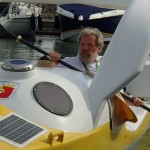
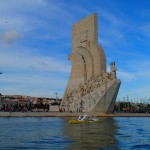
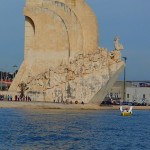
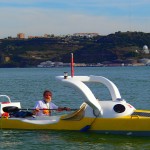

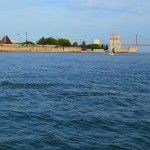
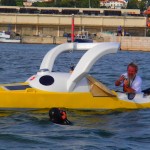
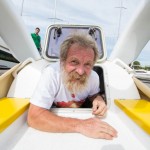

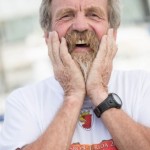

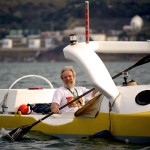
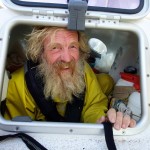
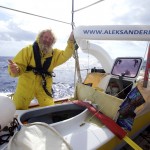

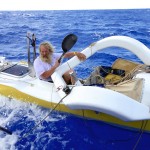

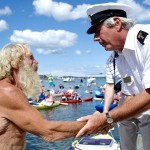
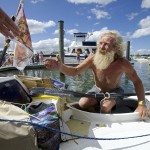
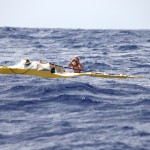
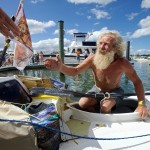

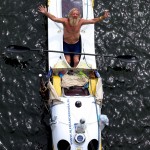
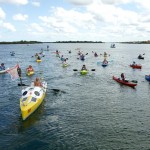




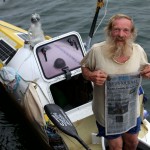

 Klienter.com |
Klienter.com |